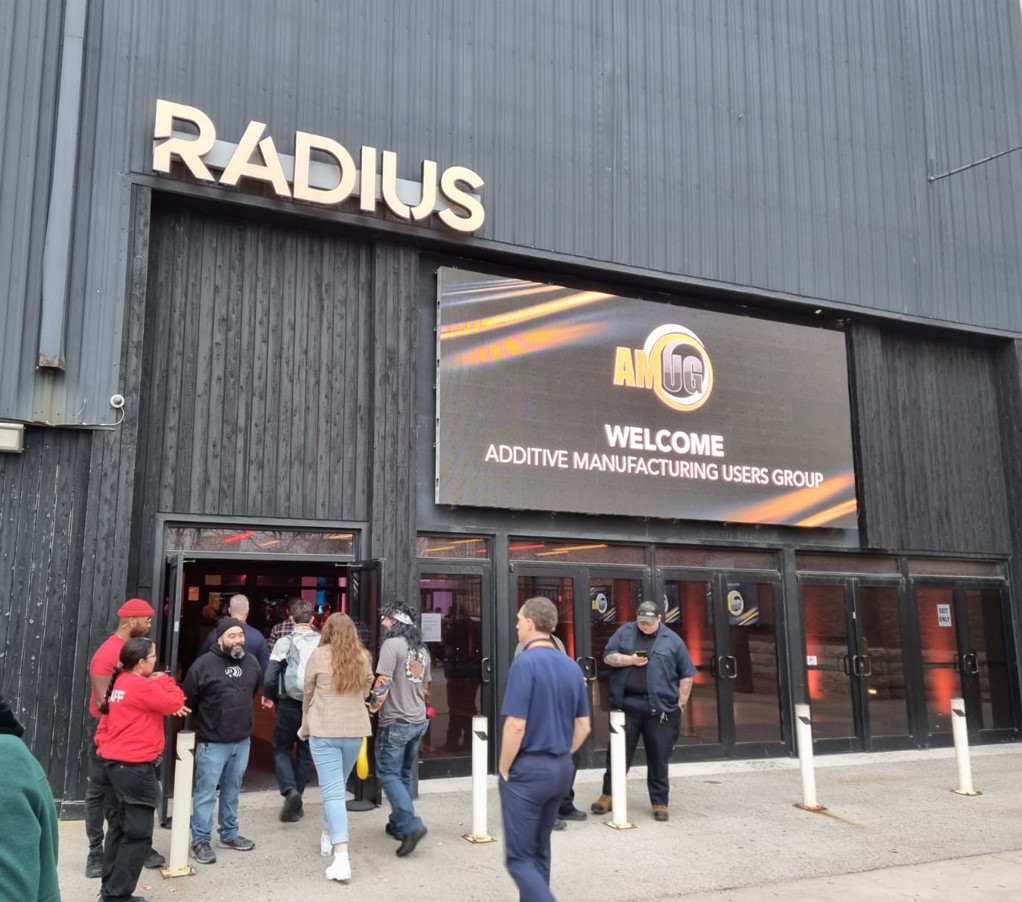AMUG is one of those Additive Manufacturing events that have been around for more than three decades – yet it took some coverage from my colleague Cameron and a media partnership with 3D ADEPT Media to bring me to Chicago, where the 2024 edition was held from March 10 to March 14th.
If for most attendees, AMUG truly started during this 11th week of the year, for our team at 3D ADEPT Media working behind the scenes to support the organization, the event started way before that as we were teasing out what attendees could expect from this 2024 edition through various communication actions.
If on-site I realized that everything Cameron shared at the beginning of his article was true, I couldn’t help but find the true magic of AMUG in stolen moments.
Learn at one’s pace
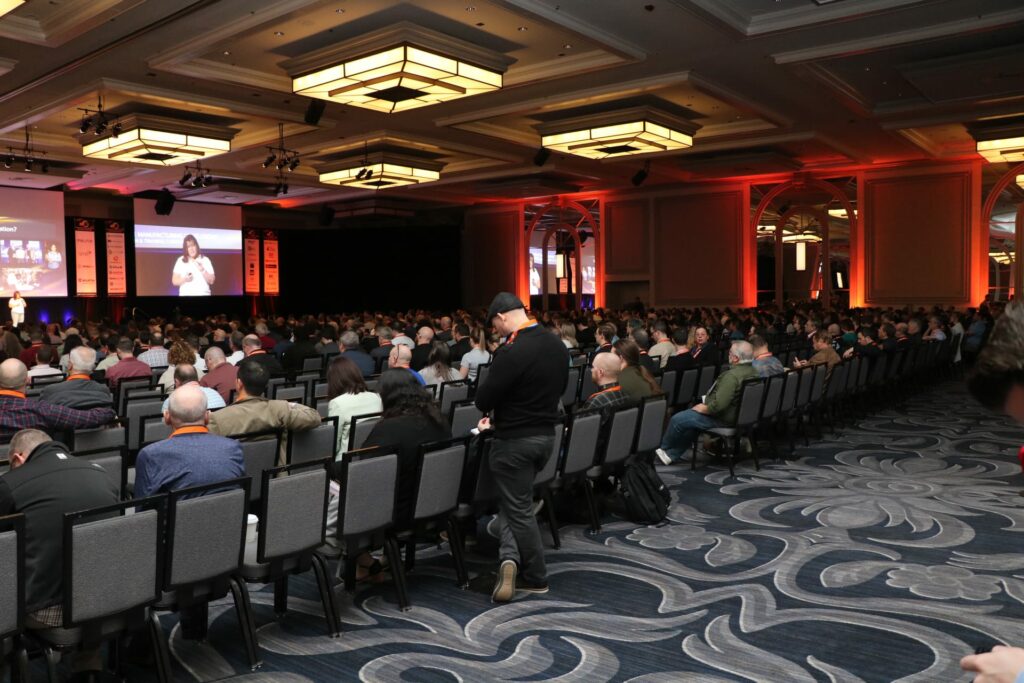 For most industry experts, attending a very large industry event is a true marathon as they have to juggle so many activities – sometimes happening at the same time (exhibition floor, conference, presentations, sessions, etc.) or different locations leaving them more than exhausted at the end of the week.
For most industry experts, attending a very large industry event is a true marathon as they have to juggle so many activities – sometimes happening at the same time (exhibition floor, conference, presentations, sessions, etc.) or different locations leaving them more than exhausted at the end of the week.
While AMUG’s agenda was packed with solid presentations, sessions and workshops, sometimes happening at the same time, the fact that everything happened under one roof, and that all attendees stayed in that same location makes it easy for everyone to create an agenda that best fits their needs with enough room to recover from each activity.
So, what are these stolen moments?
As a regular and active visitor to industry events, it was tempting to only focus on the solutions showcased on the exhibition floor. However, as a first-time attendee of this event, I quickly learned that making the most out of this event comes down to focusing on what defines AMUG: education and training. As a matter of fact, I decided to experience the whole conference by following AMUG Director, Education & Conference Ed Graham’s advice: STOP, COLLABORATE & LISTEN.
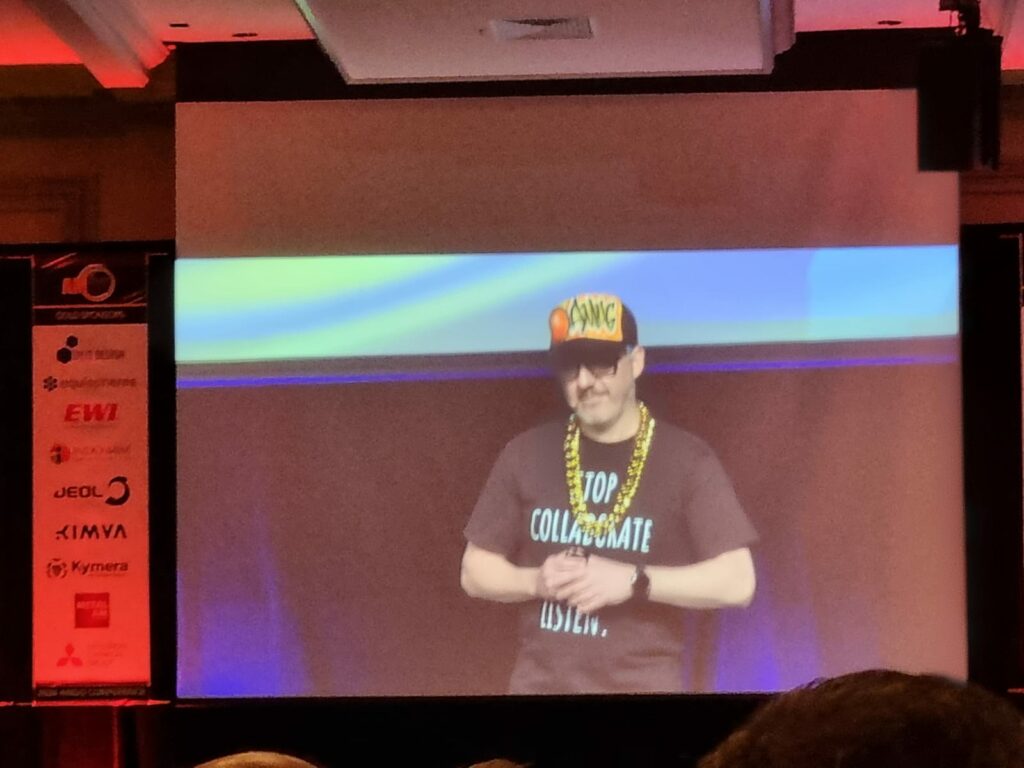
If you still wonder, let me confirm it right away: AMUG lives up to its mission to share expertise, best practices, challenges, and application developments in Additive Manufacturing. Industry insiders do it in the most genuine way, leaving behind the commercial speech that often surrounds conversations in large shows.
In this vein, the moments that truly transformed my AMUG experience were: the keynote speeches, the non-technical sessions and the workshops.
Keynote speakers
This year’s edition featured two main speakers: Jason Lopes and Olaf Diegel.
Diegel wears multiple hats: professor of AM at the University of Auckland, co-author of the Wohlers Report, artist, consultant… Well-known for his funky 3D-printed guitars, Diegel discusses the value of DfAM (- a topic he previously discussed in an interview with 3D ADEPT Media) and why it’s crucial for everyone diving into AM to have a hands-on experience on how to operate an AM machine.
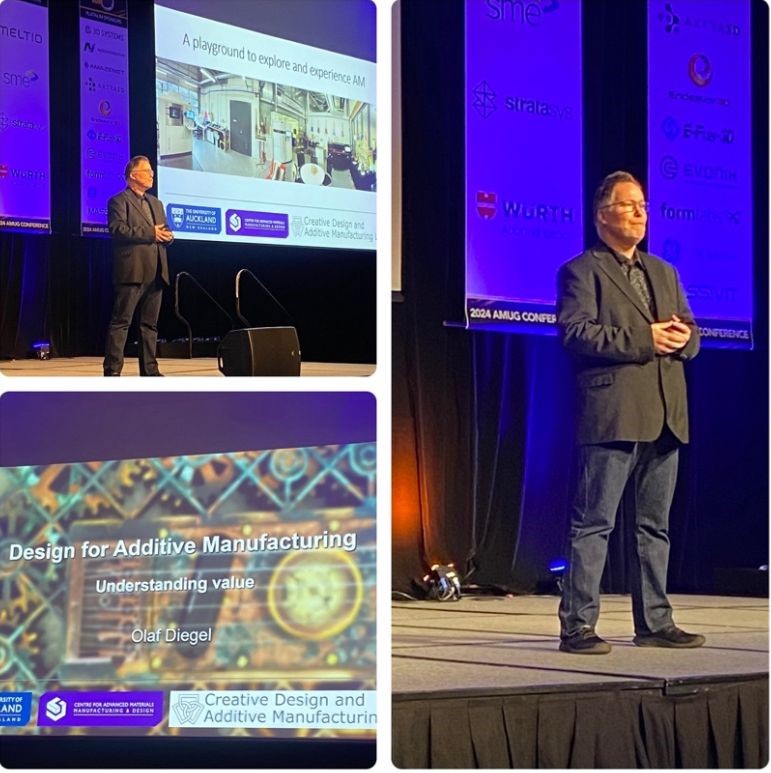
With Diegel’s presentation, I saw in the use of 3D printing some similarities with football which owns a universal language. You don’t need to speak the local jargon in order to be able to communicate with a ball. Just like football traverses different geographic and even cultural lines to become part of a universal language, 3D printing is a collaboration tool that reunites experts from different fields together.
On the other hand, Lopes’ presentation highlights how “you can create magic out of magic”. With Lopes’s presentation, I realized how underrated the potential of 3D printing is in the creative and entertainment industries. Yet, that industry is one of the rare ones that can converge multiple technologies (3D scanning, 3D modelling, 3D printing, AR/VR; etc.) in one project.
Lopes works as Chief Technology Officer at Gentle Giant Studios, a creative and digital services agency that first appeared on our radar when they brought to life the characters of Disney Pixar’s “Elemental” using 3D printing. One of the first technologies the studio leveraged is 3D scanning in 1999 when “Star Wars: The Phantom Menace” was being filmed. Over the years, the studio continues to explore 3D scanning in combination with other technologies.
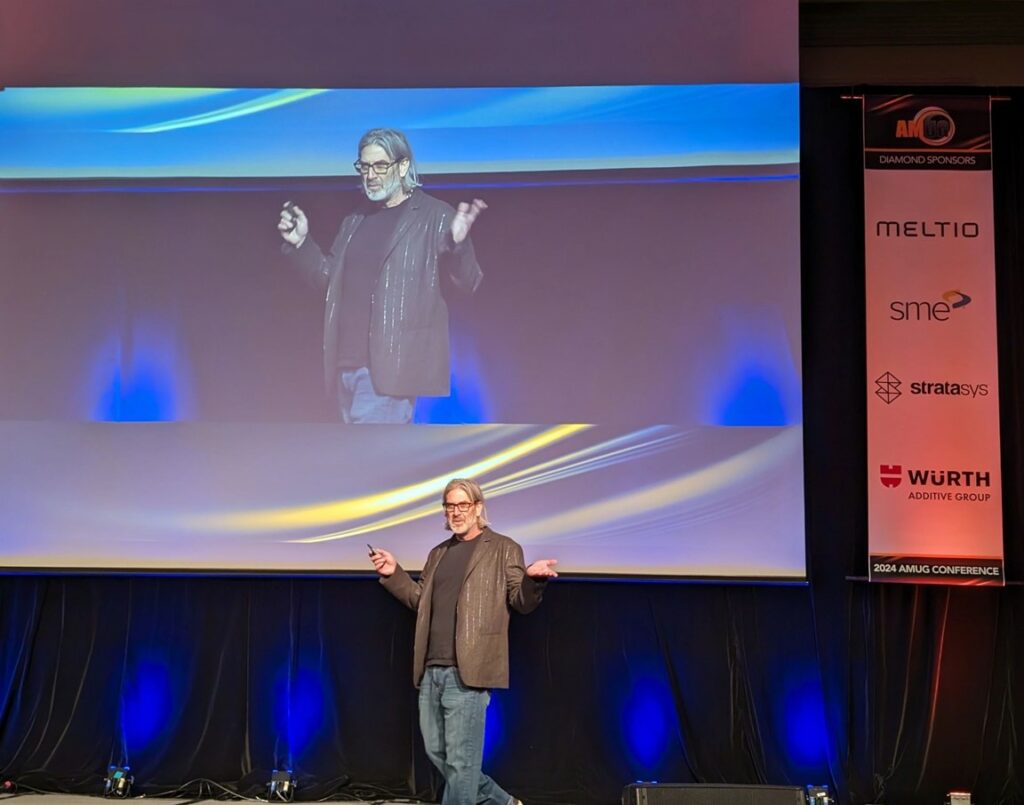
The use of 3D printing is determined by the purpose of the final application: is surface detail crucial? Does size matter the most? 3D printing is being explored in many forms and shapes – and it’s crucial to marry this technology with the skills it takes to do special effects design.
If Gentle Giants Studio has had many turning points, one that is worth mentioning is their first metal 3D print: a replica of Thanos’ infinity gauntlet from the film “Avengers: Infinity War”.
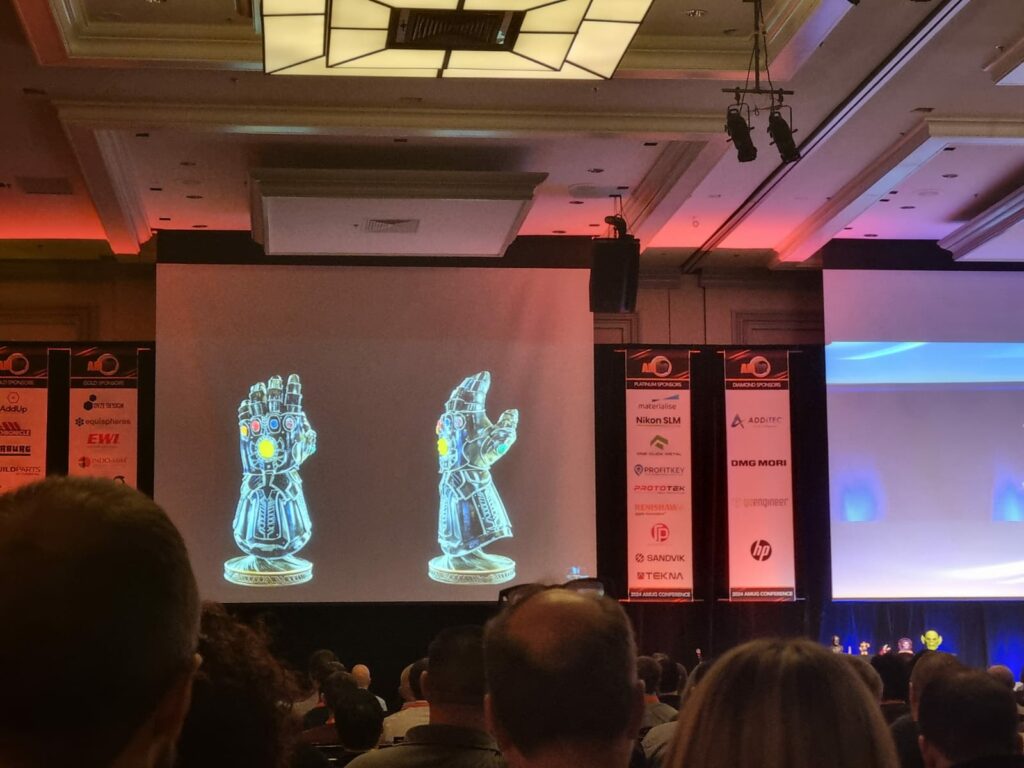
“When we print for this industry, we remain focused on what’s in front of us. You don’t see the outside”, Lopes said. Yet, this creation inspired thousands of Marvel fans and model enthusiasts to replicate their own “Thanos’ infinity gauntlet”.
Another milestone that’s worth mentioning is their debut with color 3D printing. That was in 2014/2015. After a lot of R&D projects, and a lot of work to determine their ideal workflow, Mimaki’s years of color experience finally convinced them that the full-color 3DUJ-553 3D printer was a great fit for their projects. Mimaki technology was chosen for 3 main reasons: character IP (characters often require to achieve a color palette with specific properties), its ability to achieve whatever is in your mind (imagination) and photogrammetry (which consists in ensuring a level of details through 3D scans.
To date, the studio has developed unique color schemes for each character across the many IPs and franchises that it works on.

Lopes mentioned several examples that embody how balancing art, technology, and engineering require patience and hard work – but most importantly demonstrate there are reasons there are reasons to be in awe with the digital transformation occurring in the creative industry.
Non-technical sessions
Whether you’re a scientist or not, if you attend a technology conference, you may expect 80% of the content (or more) to focus on technical concepts or conversations – which makes sense after all.
However, I believe that one of the raw and truthful moments of this conference occurred in non-technical sessions.
As you might know, AMUG has built its reputation on its ability to forge connections and synergies by learning about what others are doing. The thing is, for some people, networking seems part of their DNA, for others, it’s a skill that continuously needs to be developed and improved.
In a panel discussion hosted by John Thiell (from Beehive Industries) and instigated by Sarah Jordan (Skuld LLC), Jordan, Lisa Block (Hybrid Manufacturing Technologies), Ben DiMarco (Ohio State University) and Shannon Van Deren (Layered Manufacturing and Consulting) discuss the value of networking, as well as steps and tips introverts and beginners at AMUG should consider to make the most out of this event.
If for Block, it’s important to acknowledge one’s interlocutor work as an ice breaker, for Van Deren, one may focus on what we believe we share in common to start a conversation. Other communication techniques that were mentioned include: engage in active listening, ask questions, and show empathy as you never know what the person in front of you might be experiencing.
Beyond these tips, Jordan’s insights remind that an engineer’s role is complex and technical and to maintain relevance within their environment, communication skills remain a vital component – an evidence that is recognized by academics like DiMarco.
Given the environment in which engineers evolve, this panel went beyond giving networking skills. It was a great reminder that when navigating your engineering career, communication skills are as important as technical knowledge – therefore, they should also be given utmost priority.
Another non-technical session that I lauded was “So, you want to start an AM business” hosted by Paul DeWys (Forerunner 3D printing), with Chris Beck (Innovative 3D Manufacturing), Jay Dinsmore (Dinsmore, Inc.) and Mike Littrell (BuildParts by CIDEAS Inc.) as key panelists.
This is an industry that keeps giving life to businesses – and what we don’t often realize is that, there is a difference between being an intrapreneur and an entrepreneur.
Dewys, Dinsmore, Beck, and Littrell discussed how they started their company, what were their first machines and why they decided to go with them, where they housed their company in the beginning and even what was like to hire their first employee.
There are so many considerations to take into account and each of them should be assessed based on one’s specific journey and needs. Overall, I would like to share a few items that are crucial to keep in mind:
- Choosing the right place is a real conundrum. It should be a space that provides access to powerful and consistent electricity; a space that is substantial enough in size and that is affordable in price– obviously.
- Never forget the problem you are trying to solve. There will be hard times ahead and sometimes impromptu situations in your personal life, but keeping in mind the reason why you started will help you keep your head above the water.
- While some of these entrepreneurs bought their first machine on Amazon, others explored buying possibilities thoroughly.
- The “fundraising/bootstrapping” topic is a decision that you should make depending on where you want to go. However, be aware of the advantages and limitations of each situation. As a reminder, we discussed the pros and cons of each option here.
- Lastly, you may be focused so much on what you do…Do not forget the importance of marketing in your business.
Workshops
Taking time to attend workshops and get hands-on experience with different technologies was a great reminder that AM is not and should not be theoretical. While the experience remains holistic, I would like to acknowledge the sessions’ ability to simulate real-life workplace scenarios and improve critical-thinking.
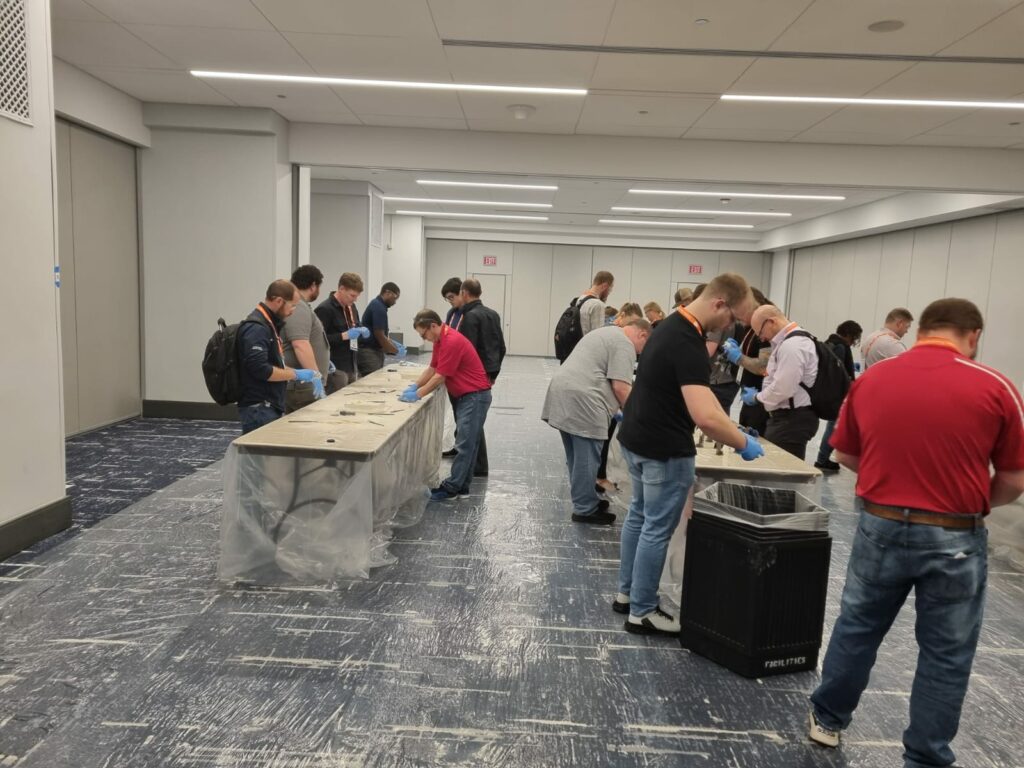
A lot more…
A lot more of sub-events drew attendees’ interest: the first AMUGderby competition (new feature to the program this year), the special event dinner themed “80’s Night” and even the Casino night – Add to that the different lunches organized in a “speed-dating” style.
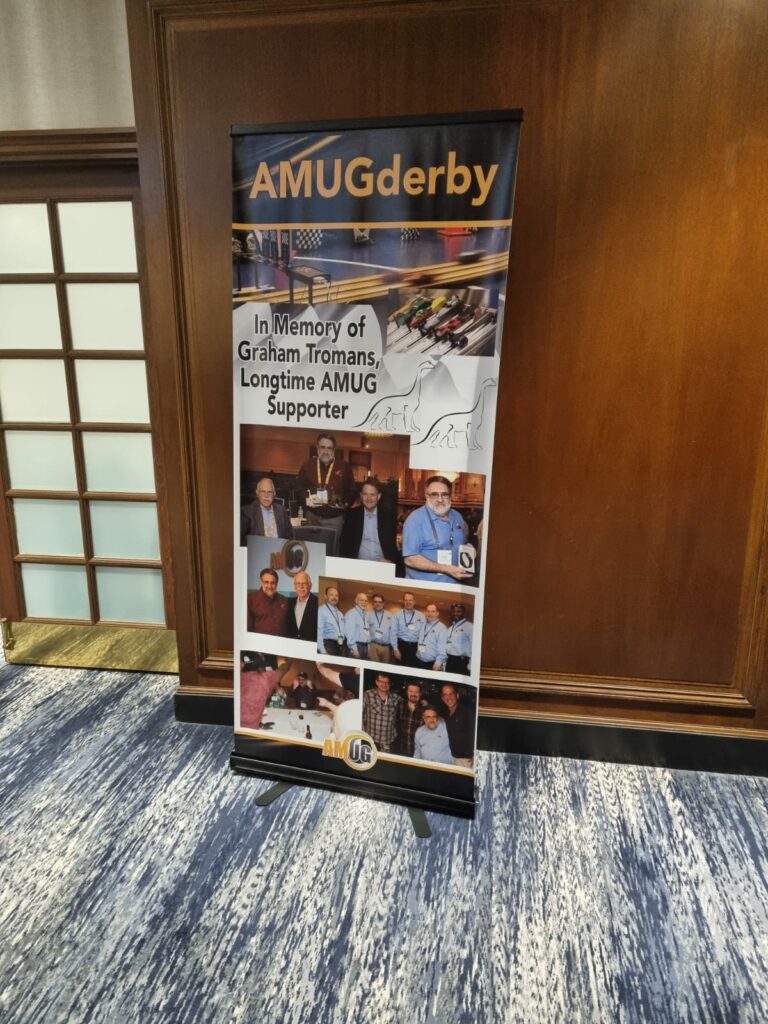
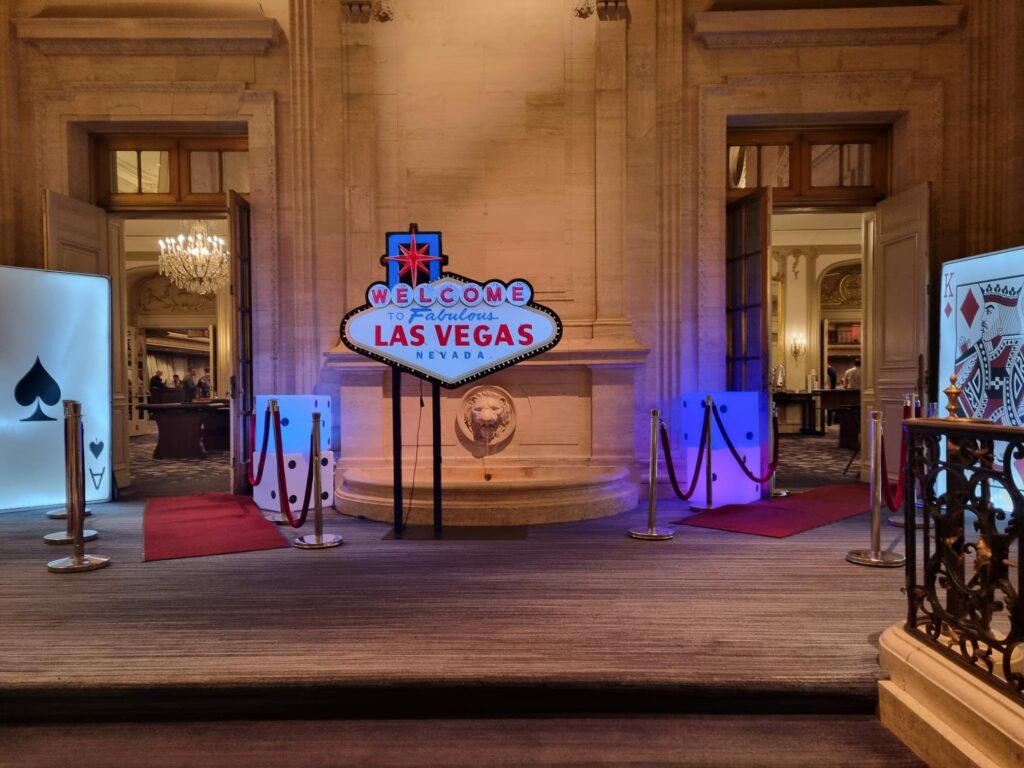
Each of these events is a reflection of how AMUG has become much more than a business conference – as it fosters a community-based approach for the growth of AM technologies.
Do you want to read more about AMUG 2024? Catch up with the latest announcements on AMUG here.
Remember, you can post free of charge job opportunities in the AM Industry on 3D ADEPT Media or look for a job via our job board. Make sure to follow us on our social networks and subscribe to our weekly newsletter : Facebook, Twitter, LinkedIn & Instagram ! If you want to be featured in the next issue of our digital magazine or if you hear a story that needs to be heard, make sure to send it to contact@3dadept.com



